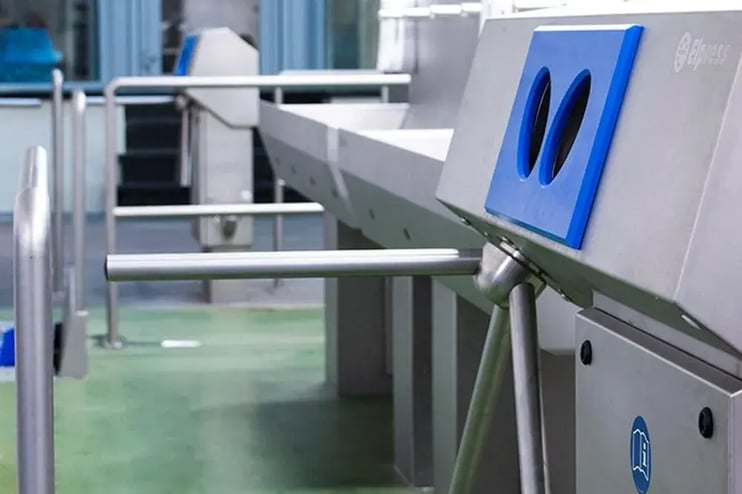6 advantages of a access control system within your hygiene process

It goes without saying that you strive for efficient and optimal personal hygiene within your company. This is certainly a requirement in the food industry. You can achieve good personal hygiene with a suitable hygiene lock. In order to guarantee the hygiene process, Elpress recommends installing a turnstile in the hygiene lock. This ensures controlled access for employees.
At most companies, employees are required to wash and/or disinfect their hands before they enter the production area. A hygiene lock is the ‘assurance’ that the staff entering the premises meet the desired or mandatory personal hygiene requirements.
Hygiene protocol for washing hands
Users apply soap to their hands with an automatic dosing unit or manually operated soap dispenser and then wash them in a hygienically designed stainless steel sink or handbasin. The taps can be switched on either with an electronic sensor or a knee-operated control. The sensor-operated washbasins are equipped with a legionella prevention system that allows the taps to be flushed regularly. After washing, the hands are dried with the Dyson Airblade Tap integrated in the handbasin, the Dyson Airblade or with paper towels. The final step in the hygienic process is to disinfect the hands with disinfecting cylinders.
Six advantages of a hygiene lock with an acces control system
Elpress recommends the use of a turnstile, i.e. an entrance gate. This ensures that your employees meet all mandatory hygiene requirements when they enter the production area. The use of a turnstile offers many advantages:
-
Hygiene control for access
Staff will only gain access to the production area after they have washed and/or disinfected their hands. Access is not granted without washing or disinfecting hands. -
Non-contact washing and disinfecting
The soap or disinfectant is sprayed onto the hands by an automatic dosing unit. This is done contactlessly, which reduces the risk of infection. -
Hand washing and sanitizing
Both hands should be inserted into the cylinders of the chemical dispenser. Only then will the turnstile be released. -
Longer contact times for disinfectants on hands
After soaping in, the turnstile is released and the employee can pass through the gate. This will take a few seconds, which allows the soap to work better before the hands are washed. -
Use chemicals controlled
The use of sensors in the chemical dispensers prevents the excessive use of chemicals and energy. The chemical also needs to be refilled less often because a 5-litre chemical container is used. When the soap or disinfectant runs out, the turnstile is blocked and the employee cannot enter the production area. -
Registration of persons and time
The hygiene lock can be provided with a badge system that registers the entry and exit of employees. An enable signal can also be given to an external passageway.
Which hygienic entrance is the best fit for your business?
Do you want to know which layout of the hygiene lock suits your company? Fill in the Hygiene Selector and find out. In five steps, you can quickly and easily see what your hygiene lock has to comply with. You will then immediately receive free, customized advice about a hygiene lock for your company. Take the test and immediately discover which hygiene lock facility is best for you.
.webp)





